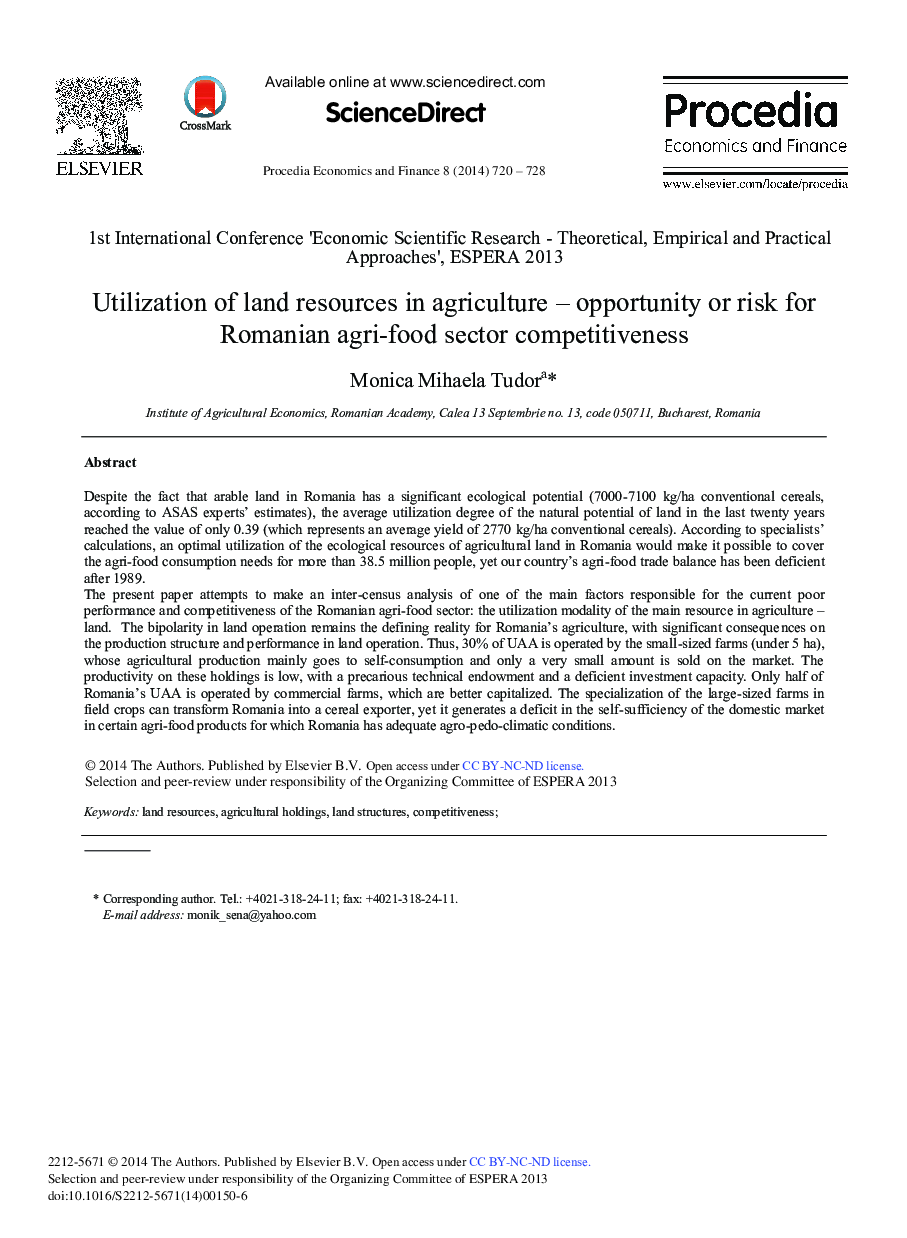| کد مقاله | کد نشریه | سال انتشار | مقاله انگلیسی | نسخه تمام متن |
|---|---|---|---|---|
| 981741 | 1480393 | 2014 | 9 صفحه PDF | دانلود رایگان |

Despite the fact that arable land in Romania has a significant ecological potential (7000-7100 kg/ha conventional cereals, according to ASAS experts’ estimates), the average utilization degree of the natural potential of land in the last twenty years reached the value of only 0.39 (which represents an average yield of 2770 kg/ha conventional cereals). According to specialists’ calculations, an optimal utilization of the ecological resources of agricultural land in Romania would make it possible to cover the agri-food consumption needs for more than 38.5 million people, yet our country's agri-food trade balance has been deficient after 1989.The present paper attempts to make an inter-census analysis of one of the main factors responsible for the current poor performance and competitiveness of the Romanian agri-food sector: the utilization modality of the main resource in agriculture – land. The bipolarity in land operation remains the defining reality for Romania's agriculture, with significant consequences on the production structure and performance in land operation. Thus, 30% of UAA is operated by the small-sized farms (under 5 ha), whose agricultural production mainly goes to self-consumption and only a very small amount is sold on the market. The productivity on these holdings is low, with a precarious technical endowment and a deficient investment capacity. Only half of Romania's UAA is operated by commercial farms, which are better capitalized. The specialization of the large-sized farms in field crops can transform Romania into a cereal exporter, yet it generates a deficit in the self-sufficiency of the domestic market in certain agri-food products for which Romania has adequate agro-pedo-climatic conditions.
Journal: Procedia Economics and Finance - Volume 8, 2014, Pages 720-728